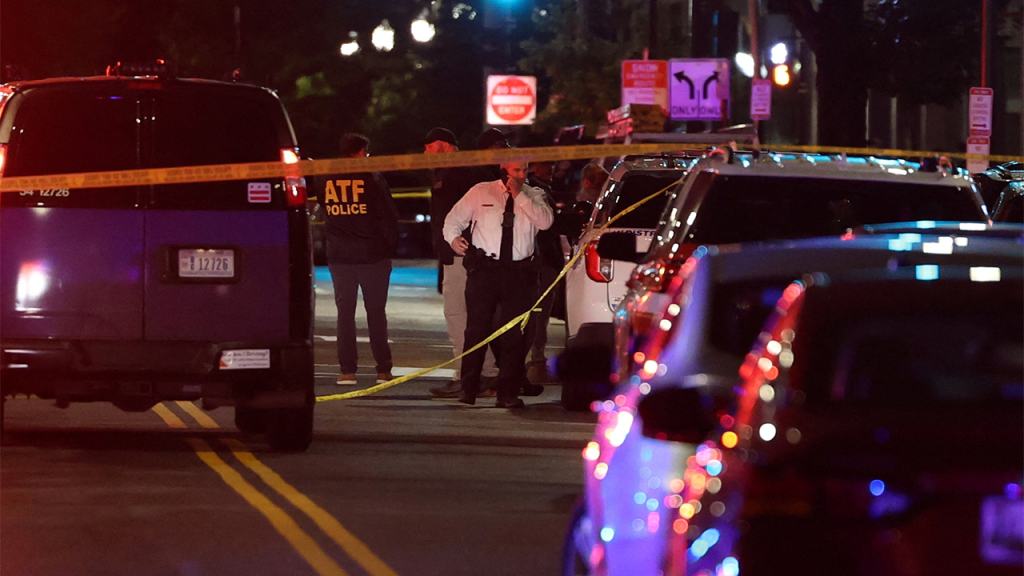A tragic shooting incident occurred outside the Capital Jewish Museum in Washington, D.C., resulting in the deaths of two Israeli Embassy staff members. The Anti-Defamation League (ADL) has linked this violence to an alarming rise in antisemitism across the United States. With incidents of hate targeting Jewish communities becoming increasingly prevalent, officials are urging a national reflection on the consequences of intolerance and the escalating climate of animosity.
| Article Subheadings |
|---|
| 1) Overview of the Incident |
| 2) Rising Antisemitism: The ADL’s Findings |
| 3) Reactions from Jewish Leaders and Officials |
| 4) The Suspect’s Actions and Motives |
| 5) The Broader Implication of Hate Speech |
Overview of the Incident
On May 21, 2025, a tragic event unfolded in Washington, D.C., when a shooting near the Capital Jewish Museum claimed the lives of two Israeli diplomatic staff members, identified as Yaron Lischinsky and Sarah Milgrim. Eyewitnesses reported chaos and panic as emergency responders rushed to the scene. The alleged shooter, identified as Elias Rodriguez, is 30 years old and was captured shortly after the incident. Witnesses noted that he shouted “Free, Free Palestine” during his arrest, providing a potential motive that may be grounded in geopolitical fervor.
Rising Antisemitism: The ADL’s Findings
The Anti-Defamation League has been closely monitoring antisemitism across the nation, and in its annual audit for 2024, the organization reported a worrying trend: antisemitic incidents have risen for four consecutive years. The audit highlighted 151 incidents in Washington, D.C., a decrease from the 171 reported in 2023, but still reflecting elevated levels of hate compared to previous years, especially 2022, which recorded only 37 incidents. The figures indicate a troubling pattern that has not gone unnoticed, prompting leaders and organizations to take action.
Reactions from Jewish Leaders and Officials
Following the shooting, the ADL’s CEO, Jonathan Greenblatt, released a statement expressing deep sadness and concern. Greenblatt indicated that the shooting should not only be viewed as an attack on the victims, but as an assault on all Jewish Americans and the broader societal fabric. He emphasized, “We know that words have consequences,” reiterating the idea that normalized antisemitic rhetoric can enable violent acts against Jewish individuals. Other Jewish leaders echoed his sentiments, warning that the persistent demonization of Jews is setting a dangerous precedent.
The Suspect’s Actions and Motives
Authorities reported that the suspect, Elias Rodriguez, has displayed a clear ideological bias in his statements before and during his arrest. His outburst of “Free, Free Palestine” is indicative of more significant socio-political motivations. The ADL’s Oren Segal explained that such rhetoric, especially in light of recent global events, contributes to an atmosphere where violence against Jews becomes increasingly acceptable. Segal highlighted that language promoting violence against Israelis has intensified, particularly since the events of October 7. This is a point of concern for many Jewish communities who fear the implications of such violent sentiments becoming normalized.
The Broader Implication of Hate Speech
The implications of the shooting resonate deeply within the Jewish community and beyond. Segal articulated that the marginalization of the Jewish community has escalated since October 7, with efforts to depict anyone who supports Israel as a legitimate target for violence. This creates a perilous context, as it legitimizes aggressive actions against innocent individuals. “Many people hear that as calling for the globalization of violence against Jews,” said Segal, alluding to expressions like “globalize the intifada,” which evoke memories of violent uprisings with devastating outcomes. As antisemitic incidents continue to break records, the urgency is clear: collective action is required to confront and dismantle these dangerous narratives.
| No. | Key Points |
|---|---|
| 1. | Two Israeli Embassy workers were fatally shot in a D.C. incident linked to rising antisemitism. |
| 2. | The ADL reported a record number of antisemitic incidents in the U.S., highlighting the urgent need for societal reflection. |
| 3. | Leaders are calling attention to the impact of hate speech and its correlation with acts of violence against Jews. |
| 4. | The suspect’s motivations reflect a dangerous ideology that normalizes violence against Jewish individuals. |
| 5. | Community leaders stress the importance of collective action to confront antisemitism and prevent future violence. |
Summary
The shooting outside the Capital Jewish Museum represents more than a singular act of violence; it underscores a growing trend of antisemitism in America. As community leaders and officials express outrage and grief, they also highlight the need for a collective introspection regarding the narratives that enable such violence. In an environment where hate speech is normalized, it becomes imperative for society to address these dangerous ideologies proactively. The incident serves as a critical reminder of the consequences of words and actions and the pressing need for unity and resilience against hatred in all forms.
Frequently Asked Questions
Question: What are the recent trends in antisemitism according to the ADL?
The Anti-Defamation League has reported rising antisemitic incidents in the U.S. for four consecutive years, indicating a troubling trend within communities.
Question: What triggered the shooting outside the Capital Jewish Museum?
The shooting is believed to be motivated by rising geopolitical tensions and antisemitic rhetoric as indicated by the suspect’s statements during arrest.
Question: How can society combat the rise in antisemitism?
Community leaders emphasize the need for proactive measures against hate speech, promoting education, dialogue, and awareness to dismantle dangerous narratives that enable violence.



